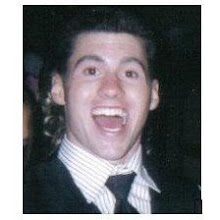
From my interactions with the St. Mary’s students I learned that young kids have tons of energy almost all the time. The whole two hours we were there they were all fired up, running around wanting to play. An activity that I felt was appropriate was when we played clean out your room where we were evaluating their motor skills of throwing. It was appropriate because we got to see them throw many of times and the game wasn’t difficult to play. An example of an inappropriate activity was when we played was rock paper scissor tag. We wanted them to skip and gallop back to the line but because of their age and how hyper they are they would just run back. This was inappropriate because we weren’t able to evaluate those motor skills because of the complexity and confusion of the game. Working with the students in the Pre K program at St. Mary’s was challenging. It was challenging because the kids were on different ability levels. Some students motor skills were at an initial stage were others were at a mature stage. It was different from working with the older age students because it took a lot longer and more effort in explaining how to play the games with the younger age students. You really have to have patience when working with the students in Pre K. Even though it takes a lot more patience with working with the younger age children I really enjoyed it because when they do get it and succeed it is a great feeling. The younger students really look up to you and I enjoy being someone’s role model. Some of the fine motor skills I observed in the cafeteria setting at St. Mary’s were the use of their hands when they were putting puzzles together. I noticed they would take different pieces and try to place the pieces together and sometimes when they wouldn’t fit they would use their hands and try to force them together. Also, I would watch them draw and would observe to see if they colored within the lines and also how long it took them to complete the drawing. When they would write their names of their paper, some of the children’s write would be straight and clear where others were sloppy and all over the place. I feel that working on fine motor activities is something we should work on in Physical Education. These fine motor skills you will need to play some of the games in class especially hand-eye coordination games. They have to develop these skills using their hands, finger and eyes in order to play some of the more advanced games. I have developed an insight as to how I want to teach from my experience and interaction at St. Mary’s. I have found that I am more of a laid back teacher but I’m firm and sincere at the same time. I’m not the type of teacher who just tells his students what to do and if they don’t do it right yell or punish the students. I like to be involved in the games and experience some of the fun the students are having. I have patience and I’m willing to take the time to help someone out without getting frustrated. I don’t like to yell but I found I have to be loud enough so you have their attention and know that you are sincere.






